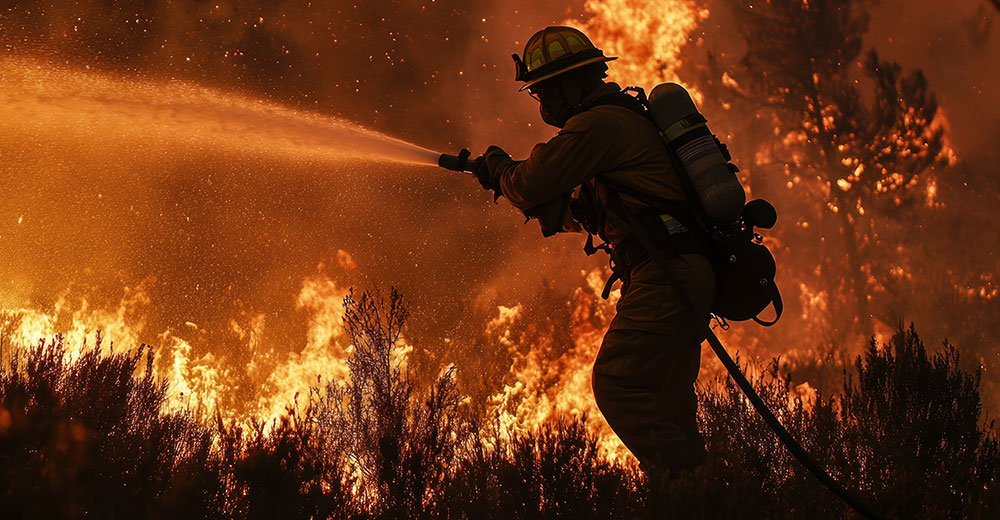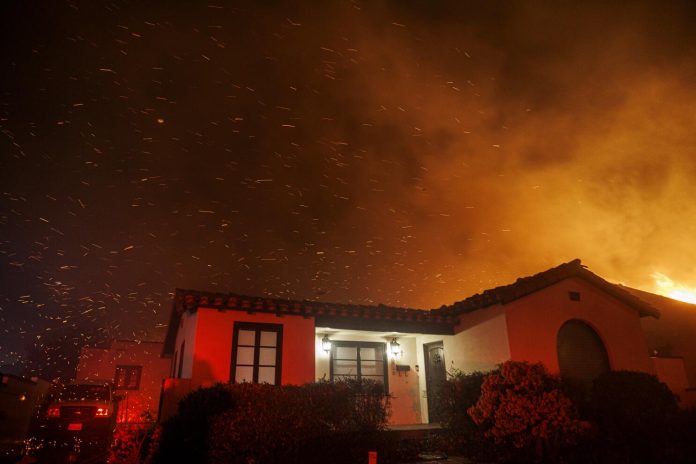Large-scale weather events are becoming more frequent, and it would be irresponsible to rebuild without upgrading buildings to prevent future disasters. Los Angeles (L.A.) has had some of the strongest building codes for earthquakes and localized fires for decades, but large-scale fire events are a new and emerging trend in the region.
Fortunately, there are many technologies and approaches available for rebuilding once the fires are out. However, it’s critical for action at the state, county, and city levels to update policies and regulations. These updates will provide architects and builders with the necessary guidance to ensure new structures are better prepared, minimizing the risk of future disasters.
This week, let’s explore strategies such as fire-resistant materials, advanced building technologies, and innovative housing solutions that can help rebuild and adapt for a safer future. We’ll wrap up with my Product of the Week: the Google Pixel Watch 3, a Christmas gift from my wife.
Hardening Homes Against Wildfires
I grew up in Orange County, Calif., and trained to fight fires. Now, I live in Bend, Ore., where we face significant fires each year.
Last year, my wife suggested we get an SUV or trailer large enough to evacuate if a fire approached. I argued that hardening our house against fire would make more sense, allowing us to shelter in place. As we’ve seen in past fires, and with the L.A. fires, getting out can be difficult when roads become clogged with evacuees and fire crews trying to get in.
Like most homes in our area, our house is primarily built from wood, which wouldn’t survive a fire. To improve its fire resilience, we replaced the roof with a combination of insulation and metal. We also installed solar panels and Tesla batteries for backup power and replaced our siding with fire-resistant Hardie Board, which smokes under heat but won’t ignite.
Our property is near a river, and we have a swim spa, both of which can serve as water sources if the hydrant system is overwhelmed, as happened during the L.A. fires. Additionally, we’ve installed rolling shutters to further insulate the house from fire and protect windows from breaking, which helps prevent flames from entering the home.
Our next step is to install an external anti-fire sprinkler system that will help protect the house from combustion, especially since it’s still wood-framed. We’re looking into Frontline, a company that specializes in home wildfire defense.
The cost of these upgrades is significant. The roof was around $20,000, the siding cost about $40,000, the automatic shutters ranged from $2,000 to $5,000 per window, and the Frontline sprinkler system will run between $20,000 and $40,000. However, the result should be a structure capable of withstanding external fire threats, allowing us to safely shelter in place.
As I was finishing this column, my wife sent me a link to a story about a homeowner who survived a fire due to a $100,000 to $150,000 investment in his own fire hydrant and a high-performance pump that kicked in when the hydrant system’s pressure dropped. He saved his home and two others, showing how a little foresight can save multiple families from struggling with insurance companies and FEMA while searching for housing in an already saturated rental market.
I expect the Frontline solution will provide a similar benefit, but this is definitely something worth considering.
Redesigning Los Angeles
As of now, the issue with the L.A. fires is that homes were not designed to withstand wildfires. The hydrant system—like most—is unable to maintain pressure during a wildfire, evacuation routes were blocked, firefighting response was too slow, and hurricane-force winds rendered aircraft mostly ineffective until they subsided.
This highlights the inadequacy of current firefighting technology for fires of this scale. Similar to earthquakes, homes need to be built to withstand fire, rather than relying on firefighting efforts to extinguish the flames.
Additionally, the government will face significant financial challenges as it recovers from the destruction. Property tax revenues will decline, and many people will be unable to pay even a reduced tax rate, as they are now homeless and potentially unemployed. Federal funds won’t be enough to fully rebuild.
Many homeowners are now without fire insurance, and getting coverage for a new structure may be impossible.
These cities need to rebuild quickly, with new, more fire-resistant buildings. They also need to rethink the layout of these areas to ensure they can be better defended against future fires, which are likely to occur again.

Rebuilding Fast with Manufactured Homes
One way to speed up the rebuilding process is by using approved manufactured homes. I’m not talking about traditional mobile homes, which are often unsafe in high winds and lack fire resistance, but rather homes like Blu Homes, which are engineered to withstand extreme weather events. These homes can be placed on existing foundations in just a few hours, offering a quick and resilient solution for rebuilding.
These homes are primarily built with fire-resistant materials and are also tested for wind resistance. Depending on availability, they can be assembled quickly by relatively small teams, allowing homeowners to return to their properties much faster.
Blu Homes packages come with most fixtures and major appliances already installed before shipping, making them an excellent solution for rapid rebuilding. The price range for a Blu Home is typically between $285,000 and $635,000, though it can exceed this depending on the number of modules and custom features.
3D Printing Fire-Resistant Homes
A newer technology in construction involves using a special cement applied through a nozzle to rapidly build homes. These 3D-printed homes are highly fire-resistant, as long as the roof isn’t made from flammable materials. They can be constructed in just a few days by a small team (usually around three to four people) and can be customized to suit specific needs.
The cost of a 3D-printed home typically ranges from $30,000 to $100,000, though larger homes can surpass the price range of traditional homes, which generally cost between $150,000 and $450,000.
Building codes often need to be adjusted to accommodate 3D-printed homes, and because of their fast construction time, inspections can be a challenge during a disaster recovery period. However, this technology stands out as one of the quickest ways to rebuild with fewer workers. While early 3D-printed homes had a unique look, newer designs combine traditional construction methods, resulting in homes that appear far more conventional. Here’s a video showcasing one of these updated designs.
Saving money and getting back into a home quickly make this technology nearly ideal, but there’s one major hurdle: Few contractors currently have the necessary equipment and training. This suggests that a government-funded initiative to subsidize training and equip builders would be timely in Los Angeles, especially if the goal is to rebuild quickly and restore tax revenues.
Wrapping Up: Modernizing Building Codes for Fire Safety
We need to rethink our building codes. For example, an architect who specializes in fire-resistant homes found that outdated city requirements led to avoidable damage during recent fires.
This effort must begin with regulatory agencies revisiting building codes to allow for more fire-resistant and advanced construction techniques. While it’s crucial to ensure buildings are safe, regulatory bodies often move slowly when updating codes due to the fear of litigation if changes go wrong.
However, if governments don’t step up to revise their codes to address extreme weather events, residents may flee their cities, labeling them unsafe and unaffordable.
As I write this, utility companies are once again facing accusations of starting some of these recent fires.
Regardless of the cause, a more effective sensor and response network is crucial to detect fires while they are still small and containable. This will require advanced drone firefighting technologies and greater use of satellites for early fire detection. Current technology is inadequate, and we aren’t yet fully utilizing AI, drones, or sensors to their full potential.
We need to design neighborhoods that are more resilient to events like these, but it starts with cities resetting their priorities to address our changing climate.
One final concept to consider is Arcology—massive, self-contained structures that could house entire towns or cities, incorporating living, working, and recreational spaces all within one building. These would be far easier to protect from increasingly dangerous weather events. As climate conditions worsen, Arcology may be the only viable solution—short of migrating to another planet—that can reliably keep people safe.



 Viesearch - The Human-curated Search Engine
Blogarama - Blog Directory
Web Directory gma
Directory Master
http://tech.ellysdirectory.com
8e3055d3-6131-49a1-9717-82ccecc4bb7a
Viesearch - The Human-curated Search Engine
Blogarama - Blog Directory
Web Directory gma
Directory Master
http://tech.ellysdirectory.com
8e3055d3-6131-49a1-9717-82ccecc4bb7a